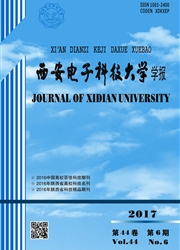

 中文摘要:
中文摘要:
现有的图像质量评价模型大多基于图像特征的统计特性,这些特征的统计特性能够有效地反映图像像素差异性导致的质量降低,但是无法体现出像素相关性减弱导致的质量变化,而像素间相关性的变化极大地影响着图像质量.因此,设计了一种像素相关性的图像质量评价模型.首先利用互信息最大化将图像分解成块内差异最小、块间差异最大的图像块,挖掘图像块和图像亮度分布之间的相关性;然后从相关熵、互信息和条件熵的角度描述这种相关性,进而把图像抽象成具体信息量、显著度信息量和缠绕信息量;最后将这些信息量在失真图像的变化映射成图像的质量分数.经实验验证,该算法所得到的客观质量评价结果与人类的主观质量评价具有较高的一致性.
 英文摘要:
英文摘要:
The available image quality assessment methods are mostly based on the statistical characteristic and seldom consider the change of pixel correlation in conjunction with the quality assessment, which induces the quality assessment metric to he limited in the degradation of image quality caused by the change of pixel correlation. However, the pixel correlation change has a great effect on the image quality, so the pixel correlation for image quality assessment is proposed in this paper. Firstly, the mutual information is utilized to segment the image into non-overlapped patches that have a minimum intra-regional diversity and maximum inter-regional diversity, which explores the relationship between segmented patches and image brightness distribution. Secondly, the correlation is described based on the relative entropy, mutual information and conditional entropy, and the image is then abstracted as the specific information, the saliency information and the entanglement information. Finally, the degradations of image information in the distorted image are mapped together to obtain final image quality. Experimental results show that the proposed framework has good consistency with subjective perception.
 同期刊论文项目
同期刊论文项目
 同项目期刊论文
同项目期刊论文
 期刊信息
期刊信息
